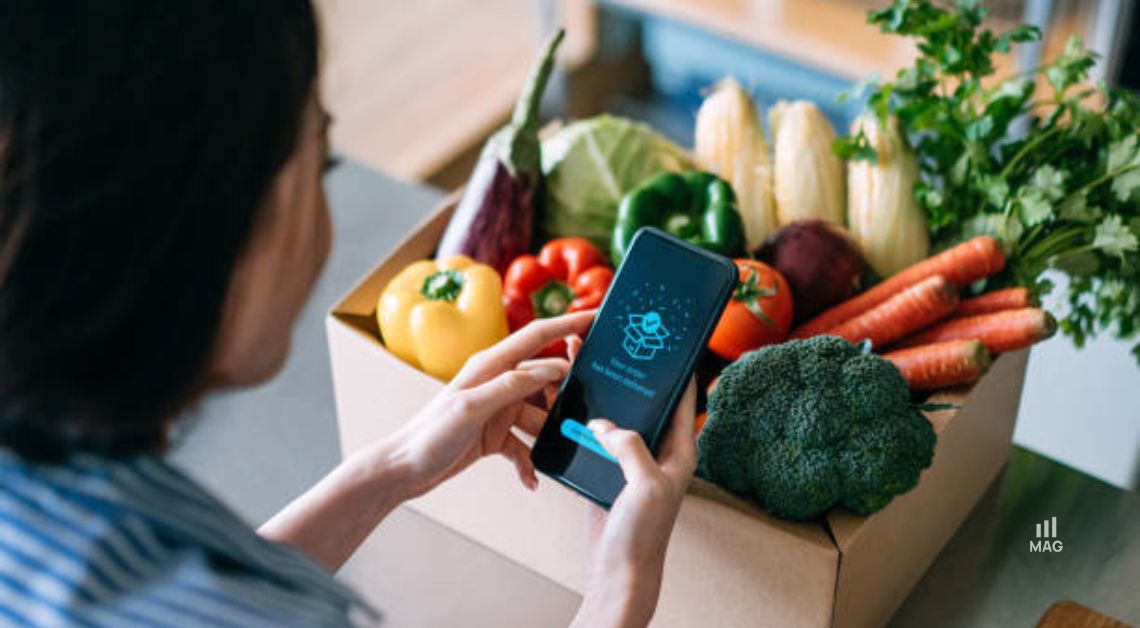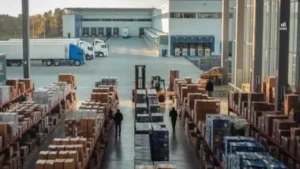
Amazon reshapes the future of food retail by streamlining operations, Target strengthens it with supply chain investments, and TikTok expands its food services, driving a shift toward efficiency, localized services, and tech-driven consumer engagement.
Grocery shopping is changing rapidly, and consumers are caught in the middle. Long checkout lines, unpredictable product availability, and a lack of personalized shopping experiences have left many frustrated. As consumer preferences evolve, traditional retailers struggle to keep up with the demand for speed, convenience, and innovation.
The rise of e-commerce, automation, and AI-driven retail has exposed the inefficiencies of outdated supply chains and in-store operations. Shoppers want frictionless experiences, but cashierless checkout technology has faced hurdles, online grocery delivery still struggles with fulfillment speed, and supply chain disruptions continue to cause price volatility.
Meanwhile, market players like Amazon, TikTok, and Target are making bold moves to redefine the grocery experience, forcing competitors to rethink their strategies—or risk falling behind.
The future of food retail will be shaped by smarter supply chains, cashierless shopping, AI-driven inventory management, and hyper-personalized customer experiences. Retail giants are investing in cutting-edge logistics, automation, and digital integration to create a seamless shopping experience—both online and in-store.
As companies refine their technology and optimize supply chains, consumers can expect faster, more efficient, and more personalized grocery shopping, whether it’s through smart stores, AI-assisted recommendations, or real-time inventory updates.
The Future of Food Retail: Amazon streamlines grocery operations and shopping experience
Amazon announced the merging of its corporate teams for Amazon Go and Amazon Fresh, according to a report by C-Store Dive. This move reflects Amazon’s ongoing efforts to reshape its physical retail presence. The company aims to improve efficiency in its grocery and convenience store operations.
A spokesperson for Amazon confirmed the merger. An internal review led to the combination of the teams. Some roles within the Worldwide Grocery Stores division, which oversees both Go and Fresh, were eliminated. Amazon stated that the number of layoffs was “very small.” Specific job titles and the exact number of affected employees were not disclosed.
This restructuring follows a period of challenges for Amazon’s physical retail sector. Amazon Go has seen a reduction in store numbers. The company closed several locations to reduce costs. After a yearlong pause in Fresh supermarket expansions due to unmet expectations, Amazon has resumed openings, although 22 completed locations remain vacant nationwide.
Amazon’s CEO, Andy Jassy, previously announced plans to cut middle management roles. This effort focused on boosting overall company efficiency. The recent changes within the grocery teams align with this strategy.
Impacted employees in the U.S. will receive pay and benefits for at least 60 days. They will also get job search support and access to transitional health benefits. Severance packages will be available.
The team merger comes six weeks after Amazon appointed Jason Buechel, Whole Foods Market CEO, to lead the Worldwide Grocery Stores division. Amazon maintains that the restructuring is unrelated to Buechel’s appointment.
Despite recent setbacks, Amazon’s spokesperson reiterated the company’s commitment to investing in its grocery and convenience store businesses. The merger of the Go and Fresh teams suggests a move towards a more integrated and cost-effective approach to physical food retail.
As Amazon continues to refine its physical retail strategy, sellers must stay alert to new developments and explore how partnering with an Amazon agency can maximize these opportunities.
Food and Grocery Retauil Global Market Report 2025"The food and grocery retail market size is expected to grow to $14586.54 billion in 2029 at a compound annual growth rate (CAGR) of 3.4%."
Amazon's struggle in the crowded grocery stores and c-store markets
An article in Retail Tech Innovation Hub noted that this move also points to the struggles Amazon faces in competing within the crowded grocery and convenience store markets. While Amazon continues to innovate, it is clear that challenges remain in terms of sustaining profitable physical retail operations.
Sumeet Goenka, Founder and CEO of YALLO Group, suggests that the industry will be closely watching how Amazon’s strategy evolves and whether this merger will lead to a more successful model or indicate a retreat from its physical retail aspirations.
Amazon’s decision highlights the increasing importance of operational efficiency and technology integration in the future of food retail. As competitors in the grocery and convenience space look on, Amazon’s next steps could have a significant impact on how the retail industry approaches innovation and expansion in the coming years.
While Amazon’s retail story is far from over, it is undeniably entering a new phase of its physical store journey. This move is part of a broader shift within the retail industry that emphasizes smarter, more efficient operations through technological advancements.
As the future of food retail continues to unfold, Amazon’s recalibrated approach could serve as a valuable case study for other players navigating similar challenges.
TikTok’s expansion signals a shift in the future of food retail e-commerce
TikTok is making bold moves in the future of food retail, expanding its local services in the U.S. to strengthen its foothold in the food and travel sectors. According to a recent article on Forest Shipping, the social media giant is actively hiring teams in key cities like Seattle, Los Angeles, and New York to foster deeper connections between local businesses, influencers, and consumers.
TikTok’s play for local food and travel services
Having seen success in Southeast Asia, where it enabled content creators to distribute discount coupons for restaurants and hotels, TikTok is now looking to replicate this strategy in the U.S. By integrating food and travel influencers into its commerce ecosystem, the platform aims to drive local business engagement and open new revenue streams for merchants.
The shift comes as TikTok Shop, which launched in the U.S. in September 2023, gains momentum in the e-commerce space. Analysts predict that TikTok Live sales could reach $77 billion by 2027, underscoring the platform’s growing influence in digital retail.
What this means for food retailers and grocers
For restaurants and food brands, TikTok’s expansion presents both an opportunity and a challenge. The platform’s algorithm-driven discovery model could significantly boost visibility for small and mid-sized food businesses, allowing them to reach new audiences through influencer collaborations.
At the same time, businesses will need to adapt to a fast-moving, content-driven sales environment where engagement is key to success. With TikTok reshaping how food businesses connect with consumers, the future of food retail is being redefined—blending social media, e-commerce, and local experiences into a powerful new retail model.
Future of Food Retail: Target strengthens grocery supply chain to capture a larger market share
As competition in the grocery sector heats up, Target is reshaping the future of food retail by bringing its fresh and frozen food supply chain in-house. According to a recent article in The Wall Street Journal, the retailer has opened three temperature-controlled food distribution centers in the past two years and plans to add another in 2025, expanding its logistics network to nine facilities nationwide.
A strategic move to meet changing consumer demand
By handling its own grocery logistics, Target gains greater control over inventory placement, ensuring that high-demand products are readily available at the right locations. This just-in-time stocking approach could give the retailer a competitive edge over rivals still dependent on third-party distribution models.
The move also underscores a broader industry shift: as food retail evolves, major players are investing heavily in tech-driven supply chain innovations to enhance efficiency and customer experience.
What this means for the Future of Food Retail
With grocery retail becoming increasingly competitive, streamlined supply chain operations and data-driven inventory management are set to define the future of food retail. Target’s strategy reflects a growing trend where retailers must integrate logistics and inventory planning more effectively to keep pace with shifting consumer expectations.
As technology, logistics, and consumer behavior continue to evolve, retailers that invest in supply chain innovation will be better positioned to meet demand and stay ahead in the food retail race.






